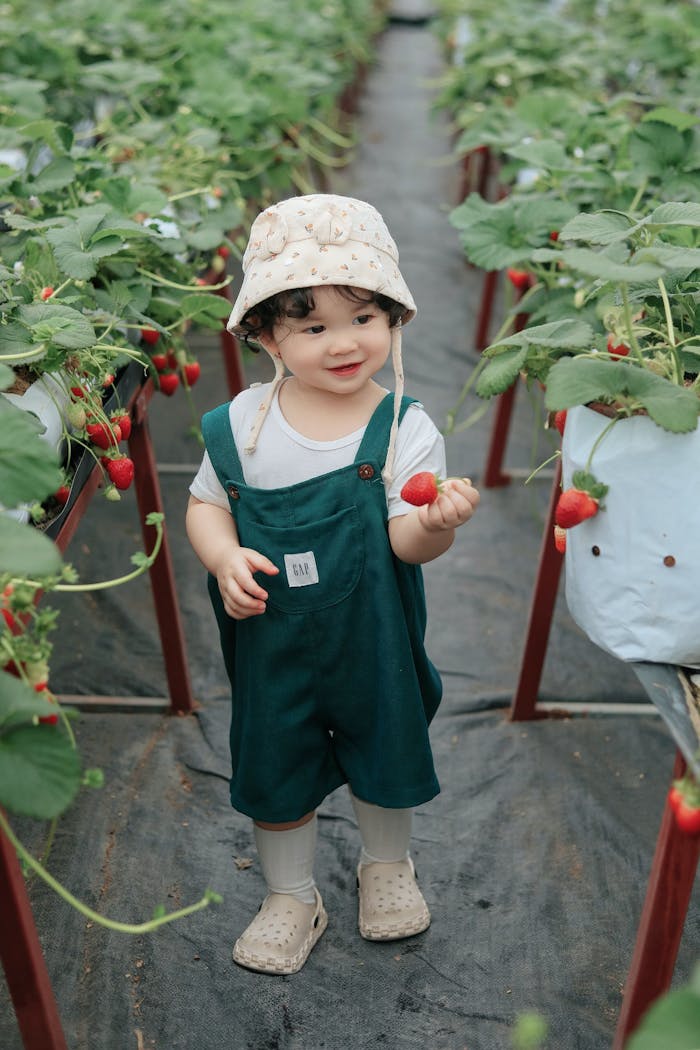|
IN BRIEF
|
Welcome to the fascinating world of hydroponic gardening, where soil is traded for nutrient-rich water and plant roots are embraced by innovative systems. If you’re captivated by the idea of cultivating vibrant greens in your own home, this guide is your beacon. Whether you’re a seasoned gardener or just beginning your green journey, selecting the right plants is crucial for a thriving hydroponic garden. With an array of species that flourish without soil, you’ll discover leafy greens, herbs, and fruiting plants that can transform your space into a lush oasis. Get ready to unlock the secrets of successful hydroponics and nurture a bountiful indoor garden!
Understanding Hydroponic Culture
Hydroponic culture is an innovative method that allows plants to grow without soil, using nutrient-rich water solutions instead. This technique nurtures the roots of plants in a controlled environment, allowing for faster growth and higher yields. The elimination of soil means that pests and diseases common in traditional gardening can be significantly reduced, making hydroponic systems a preferred method for many growers. Understanding which plants thrive in hydroponic settings is crucial for anyone looking to embark on this gardening journey.
Types of Hydroponic Systems
Before diving into the selection of plants, it is essential to understand the various types of hydroponic systems available. Different plants may thrive under different conditions, and selecting the right system can make a big difference.
Deep Water Culture (DWC)
In Deep Water Culture, plants are suspended in a solution of oxygenated, nutrient-rich water. This method allows for significant growth as plants have access to both nutrients and oxygen. Suitable plants for DWC include lettuce, spinach, and herbs, as these can emerge rapidly with adequate nutrient supply.
Nutrient Film Technique (NFT)
NFT involves a continuous flow of nutrient solution over the roots of the plants. This technique is most effective for plants that have short root systems. Strawberries and basil are excellent choices for NFT systems, flourishing with minimal medium and efficient nutrient delivery.
Vertical Hydroponic Systems
In vertical systems, plants are grown in stacks, utilizing vertical space. This method is particularly useful in urban settings where space is limited. Cucumbers, tomatoes, and peppers all perform well here, as they benefit from the verticality and require support for upward growth.
Plants Best Suited for Hydroponics
Choosing the right plants for hydroponic cultivation can greatly influence your success. Below is a compilation of some of the most effective plants to grow in hydroponic systems.
Leafy Greens
Leafy greens are some of the top performers in hydroponic systems. They generally require minimal maintenance and have short growth cycles.
Lettuce
Lettuce varieties such as Romaine and Butterhead are particularly popular due to their quick growth (usually within 30 days) and high yield. The flavor becomes more vibrant when grown hydroponically compared to traditional methods.
Spinach
Spinach grows well in both DWC and NFT systems, thriving when nutrients are balanced. With its rich nutritional profile, hydroponically grown spinach can be harvested within 40 days.
Herbs
Herbs are naturally suited for hydroponic cultures, offering intense flavors and versatile uses in cooking.
Basil
This aromatic herb thrives in NFT systems. Basil prefers warm temperatures (75-85°F or 24-29°C) and can be harvested within just a few weeks of planting.
Mint
Mint is a resilient herb that performs admirably in hydroponic gardens. It tends to spread quickly, making it essential to control its growth; however, the flavor is robust and aromatic.
Fruiting Plants
While growing fruiting plants in hydroponics can be slightly more challenging, several varieties yield delicious results.
Tomatoes
Tomatoes are a favorite among hydroponic gardeners. With ample light and nutrient supply, tomato plants can produce fruit in 70-90 days. DWC and vertical systems work exceptionally well for these.
Cucumbers
Cucumbers adapt well to vertical hydroponic systems, where they can climb and flourish. Hydroponic cucumbers tend to be crisper and more flavorful compared to conventionally grown varieties, thriving with the right high-nutrient environment.
Root Vegetables
Though many root vegetables struggle in hydroponic settings, some adapt well, provided the conditions are ideal.
Radishes
This fast-growing vegetable can be successfully cultivated hydroponically, often ready for harvest in just three weeks. Radishes flourish under low nutrient requirements, making them a perfect beginner-friendly crop.
Beets
Beets can also do well in hydroponic systems, specifically in a DWC or mixed aggregate setup. Given their size, ensure that your system allows enough space for their roots.
Flowers and Ornamental Plants
Hydroponics can extend beyond traditional edibles to include flowering plants, blending aesthetics and agriculture.
Orchids
Orchids can thrive in hydroponic systems, especially when grown in a shallow container or vase with water. They contribute a lovely touch to any indoor garden.
Pothos
Pothos is known for its ability to clean the air and is ideal for hydroponic setups. They can thrive in a simple water system and don’t require much light, making them an excellent choice for beginners.
Considerations for Successful Hydroponic Gardening
Although many plants can adapt well to hydroponic conditions, some general considerations can help maximize your success.
Lighting Requirements
Choosing plants that suit your available lighting is crucial. Many hydroponic plants thrive under artificial light, such as LED grow lights, which enhance photosynthesis and growth rates. Knowing the specific light requirements for each plant type is essential. For instance, tomatoes require longer durations of light compared to leafy greens.
Nutrient Solutions
The effectiveness of hydroponic gardening is heavily reliant on the proper nutrient solution. Regular testing and adjustments ensure that plants receive the necessary elements. Consider buying commercially available hydroponic nutrients that offer balanced formulations specific to the types of plants being grown.
Water Quality
It’s vital to maintain clean water devoid of contaminants. Regular monitoring of pH levels, ideally between 5.5 and 6.5, assists in keeping plants healthy and thriving.
Enhancing Your Hydroponic System
Incorporating a living wall or integrating a more advanced system can maximize the efficiency of hydroponic gardening.
Creating a Living Wall
A living wall not only saves space but also adds stunning aesthetics to any environment. This vertical planting system can house a range of plants, such as herbs, lettuce, and flowering plants. For detailed steps on constructing a living wall in your home, you can refer to resources such as this guide.
Using Technology to Optimize Growth
Investing in timers for lights, sensors for pH levels, and automated nutrient injectors can further enhance your hydroponic gardening experience. These technologies can reduce manual tasks and lead to higher yields with less effort.
Final Thoughts on Hydroponic Plant Selection
Choosing the right plants for hydroponic growing is a matter of understanding both the plants themselves and the specifics of the hydroponic system you choose. With the proper setup, a balanced nutrient solution, and the right plants, you can enjoy a bountiful harvest year-round, regardless of the soil conditions outdoors.
Understanding Hydroponic Plants
Hydroponic gardening provides a unique opportunity to cultivate a diverse array of plants without the need for soil. This method not only offers the potential for higher yields but also leads to faster growth due to the controlled environment. However, it is essential to select suitable plants for this system to ensure success. Leafy greens such as lettuce and spinach are among the best candidates, as they thrive in nutrient-rich solutions and have relatively shallow root systems. Such plants not only adapt well but also produce faster than their soil-grown counterparts, making them perfect for beginners.
Moreover, fruiting plants like tomatoes and cucumbers can also do well in hydroponic setups. With systems designed for vertical growth, these plants can scale heights and make use of limited space effectively. As noted, “the key to successful hydroponic gardening lies in understanding plant requirements and adapting your system to meet those needs.” This adaptability means considering factors such as light exposure and nutrient delivery methods.
Selecting the Right Hydroponic System
Choosing an appropriate hydroponic system is just as crucial as selecting the right plants. Techniques like Deep Water Culture (DWC) provide ample oxygen and nutrients, supporting robust growth for plants with substantial root mass. Additionally, crops such as bell peppers and herbs can flourish in various hydroponic environments when given the proper care. This thoughtful combination of plant selection and system design enables enthusiasts to create thriving hydroponic gardens that contribute to sustainability and self-sufficiency.
When it comes to creating a thriving hydroponic garden, choosing the right plants is essential. From vibrant leafy greens to robust fruiting plants, a variety of species can flourish in a well-structured hydroponic system. Factors such as root structure, growth habits, and light requirements should guide your selections. Whether you opt for crisp lettuce, colorful bell peppers, or aromatic herbs, understanding each plant’s specific needs will enhance your gardening experience. Additionally, systems like Deep Water Culture or Nutrient Film Technique can significantly influence plant performance. Ultimately, nurturing a hydroponic ecosystem can lead to bountiful harvests, sustainability, and the joy of growing fresh produce right at home. Embrace the possibilities that hydroponic culture offers!
Frequently Asked Questions about Hydroponic Plants
What are the best plants for hydroponic cultivation?
Some of the best plants for hydroponics include leafy greens like lettuce and spinach, herbs such as basil and mint, and fruiting plants like tomatoes and cucumbers. These plants thrive in nutrient-rich solutions and can yield high quality produce.
Can all plants be grown hydroponically?
Not all plants are suitable for hydroponic systems. Generally, plants with shallow root systems and fast growth rates are best. Crops that require deep roots, like carrots and potatoes, are not ideal for hydroponic gardening.
What hydroponic system is best for different plants?
Different hydroponic systems work better for various plants. For instance, Deep Water Culture (DWC) is great for plants with substantial root mass such as cannabis, while Nutrient Film Technique (NFT) is perfect for leafy greens and herbs.
Do hydroponic plants require a lot of space?
Hydroponic systems can be designed vertically, which allows for the conservation of space. While some plants do require more room, many can thrive in compact systems that utilize vertical gardening techniques.
How do I maintain nutrient levels in a hydroponic system?
It’s essential to regularly monitor and adjust the nutrient solution’s pH and concentration. Using a nutrient-rich solution tailored for the types of plants you are growing will ensure they receive the necessary nourishment.
Can I grow ornamental plants in a hydroponic system?
Yes, several ornamental plants, such as pothos and peace lilies, can thrive in a hydroponic setup. They often require less complexity compared to food-producing plants and can be very rewarding to grow.
What is Deep Water Culture (DWC)?
Deep Water Culture (DWC) is a hydroponic method where plants are suspended in a nutrient-rich solution with their roots submerged in water, allowing for nutrient uptake and oxygen access, promoting rapid growth.
How can I start my hydroponic garden?
To begin your hydroponic garden, you will need to choose a suitable hydroponic system, select appropriate plants, and set up a nutrient solution that meets their needs. Starting with easier plants like lettuce or herbs is recommended for beginners.

